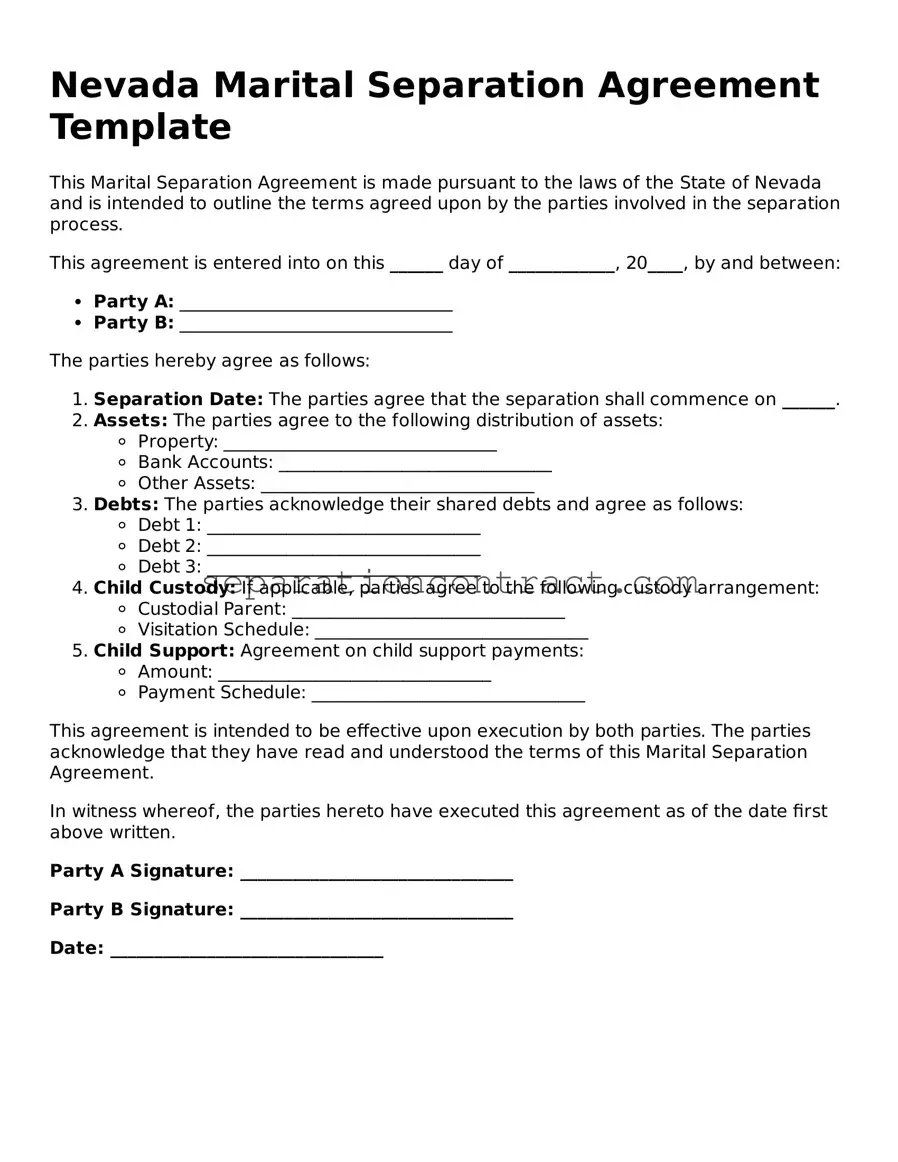Filling out the Nevada Marital Separation Agreement form can be a daunting task. Many individuals make common mistakes that can lead to complications later on. One frequent error is failing to provide complete and accurate personal information. This includes not only names and addresses but also important identification numbers. Omitting such details can delay the processing of the agreement.
Another common mistake involves neglecting to specify the terms of property division clearly. Individuals may assume that their understanding of property division is mutual, but without clear terms, disputes can arise. It is essential to outline who will retain ownership of specific assets, such as real estate, vehicles, and personal belongings.
People often overlook the importance of detailing spousal support or alimony. Some individuals may believe that this aspect is unnecessary, yet it is crucial to address financial support explicitly. Without this information, one party may face unexpected financial hardships after separation.
Additionally, many fail to consider the implications of child custody and support. Parents may not fully understand how to articulate their custody arrangements. Clear definitions of physical and legal custody, along with visitation rights, are vital to ensure the well-being of the children involved.
Another mistake is not including a dispute resolution clause. This clause can provide a structured approach to resolving conflicts that may arise in the future. Without it, parties may find themselves back in court over disagreements that could have been settled amicably.
Many individuals also underestimate the importance of reviewing the agreement with legal counsel. Some might think they can navigate the process independently, but a legal expert can provide invaluable insights. They can help identify potential pitfalls and ensure that the agreement is fair and enforceable.
Moreover, people often forget to date and sign the agreement properly. A lack of signatures or incorrect dating can render the document invalid. It is essential to ensure that all parties involved have signed and dated the agreement to confirm their consent.
Lastly, individuals may fail to keep copies of the finalized agreement. After completing the form, it is crucial to retain copies for personal records and future reference. This simple step can prevent misunderstandings and provide clarity if questions arise later.
